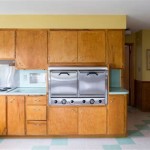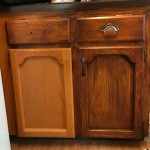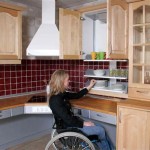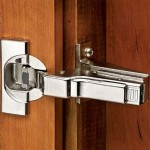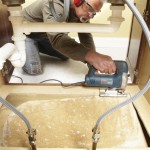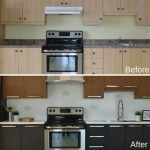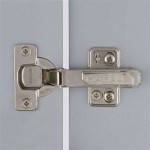How to Remove Cabinets from the Wall
Removing cabinets from the wall may seem like a daunting task, but with the right tools and a step-by-step guide, it can be done safely and efficiently. Whether you're remodeling your kitchen or making way for new cabinetry, here's a comprehensive guide to help you remove cabinets from the wall without causing damage.
1. Safety First
Before beginning, ensure you have the necessary safety gear. Wear gloves to protect your hands and safety glasses to shield your eyes from debris. If you're working with heavy or large cabinets, consider getting a helper to assist you. Always disconnect the power supply to any appliances or outlets near the work area for electrical safety.
2. Unload and Remove Doors and Drawers
Start by emptying the cabinets of all their contents. Remove the doors and drawers by unscrewing the hinges or pulling them out on the slides as per the cabinet design. Setting these components aside will reduce the weight of the cabinets and make them easier to handle.
3. Locate and Unscrew Mounting Screws
Most cabinets are secured to the wall with screws or bolts. Use a screwdriver or wrench to locate and unscrew these fasteners. Check both the top and bottom of the cabinets for mounting points. Sometimes, there may be hidden screws concealed by trim or molding. Remove these carefully to avoid damaging the surrounding area.
4. Disconnect Plumbing and Wiring
If the cabinets are connected to any plumbing or electrical systems, such as sinks or under-cabinet lighting, you'll need to disconnect them before removal. Turn off the water supply to any faucets or sinks and disconnect the plumbing lines. For electrical wiring, switch off the power at the breaker panel and disconnect the wires from the cabinet's electrical box.
5. Carefully Lower the Cabinets
With all the screws and connections removed, you can now carefully lower the cabinets from the wall. If the cabinets are heavy or bulky, use a pry bar or lever to gently detach them from the wall studs. Support the cabinets from the bottom to prevent them from falling and causing damage. Slowly lower the cabinets to the floor or a designated workspace for further dismantling or disposal.
6. Remove Cabinetry Trim or Molding
Once the cabinets are detached from the wall, you can remove any remaining trim or molding around the edges. This may involve carefully prying the trim loose using a flathead screwdriver or utility knife. Be cautious not to damage the wall or surrounding surfaces during this step.
7. Clean Up
After removing the cabinets, clean up the work area by sweeping or vacuuming any debris or dust. Fill any holes left by the screws or bolts with spackle or wood filler. Allow the spackle to dry and sand it smooth to blend it with the surrounding wall surface.
Tips for Easy Removal
- If the cabinets are particularly heavy, consider using a furniture dolly or hand truck to move them.
- Place a drop cloth or cardboard under the cabinets to catch any falling debris.
- If the cabinets have been painted or refinished, use a heat gun or hairdryer to soften the paint before attempting to remove it.
- Be patient and take your time throughout the removal process to avoid accidents or damage.
Conclusion
Removing cabinets from the wall can be a straightforward task if you follow the steps outlined above. By taking the necessary safety precautions, carefully unscrewing the fasteners, disconnecting any plumbing or wiring, and supporting the cabinets during removal, you can safely and efficiently remove your old cabinetry for a fresh new look in your space.

3 Ways To Remove Kitchen Cabinets Wikihow

3 Ways To Remove Kitchen Cabinets Wikihow

How To Remove Kitchen Wall Cabinets And The Cabinet Bracket Works

How To Remove Kitchen Cabinets

3 Ways To Remove Kitchen Cabinets Wikihow

How To Remove Cabinets Open Up Kitchen Plus Hanging Helpful Diy Remodel Tips

Step By How To Remove Upper Wall Cabinets

How To Remove Kitchen Cabinets

How To Remove Kitchen Cabinets

How To Remove Kitchen Cabinets Diy Mega
Related Posts

